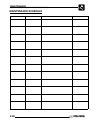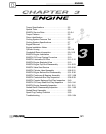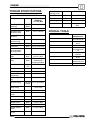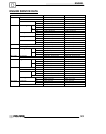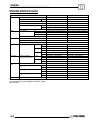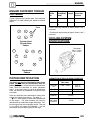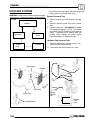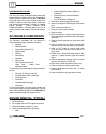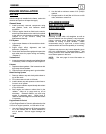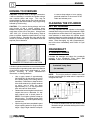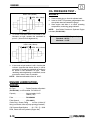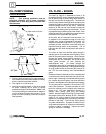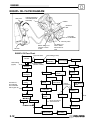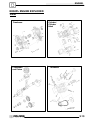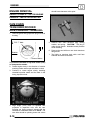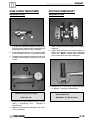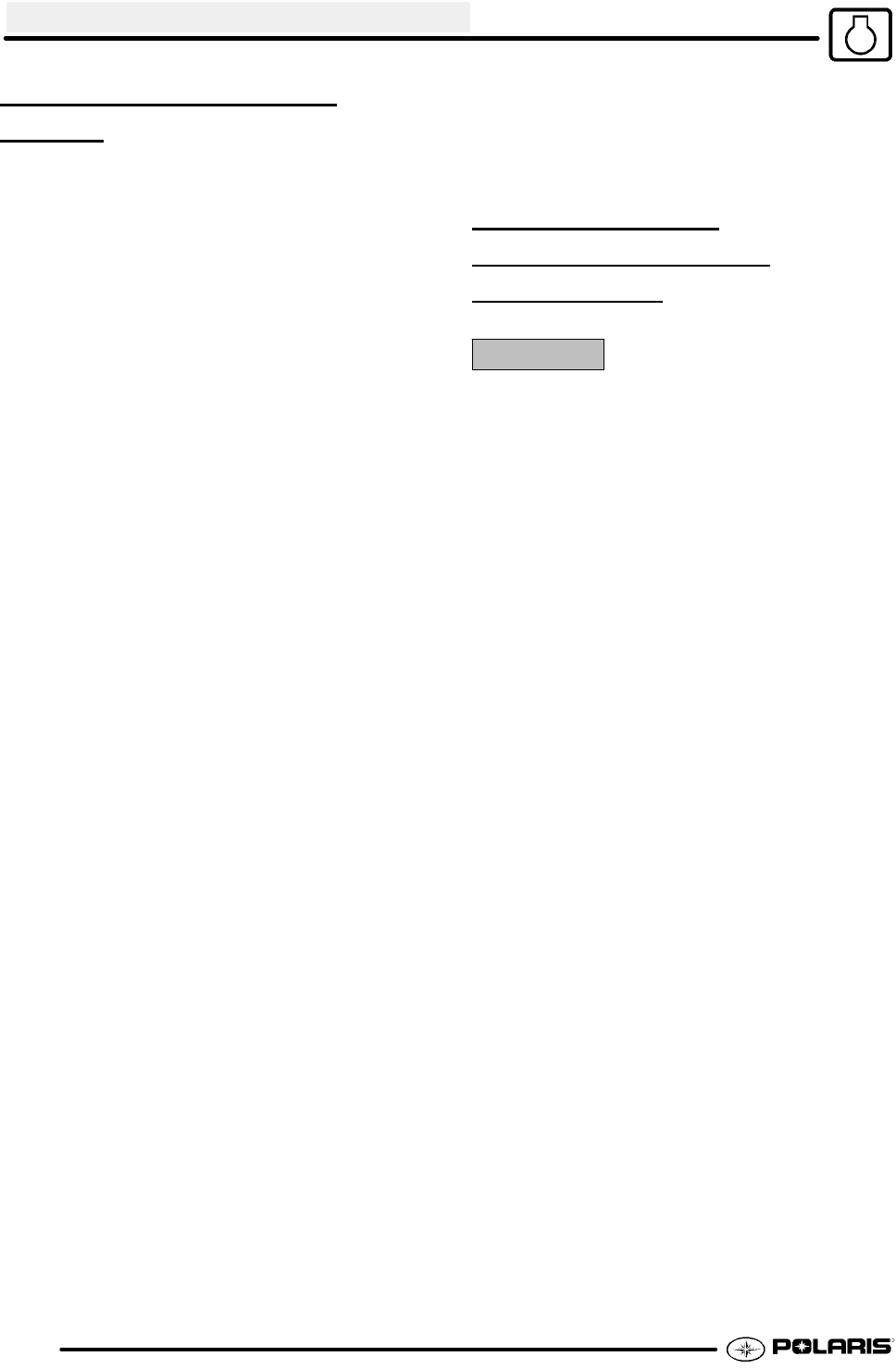
ENGINE
3.8
ENGINE INSTALLATION
NOTES
After the engine is installed in the frame, review this
checklist and perform all steps that apply.
General Items
1. Install previously removed components using
new gaskets, seals, and fasteners where
applicable.
2. Perform regular checks on fluid levels, controls,
and all important areas on the vehicle as outlined
in the daily pre-ride inspection checklist (refer to
Chapter 2 or the Owner’s Safety and
Maintenance Manual).
PVT System
1. Adjust center distance of drive and driven clutch.
(Chapter 6)
2. Adjust clutch offset, alignment, and belt
deflection. (Chapter 6)
3. Clean clutch sheaves thoroughly and inspect inlet
and outlet ducts for proper routing and sealing.
(Chapter 6)
Transmission
1. Inspect transmission operation and adjust linkage
if necessary. Refer to Chapter 2 and Chapter 8.
Exhaust
1. Replace exhaust gaskets. Seal connections with
high temp silicone sealant.
2. Check to be sure all springs are in good condition.
Bleed Cooling System
1. Remove radiator cap and slowly add coolant to
top of filler neck.
2. Fill coolant reservoir tank to full mark.
3. Install radiator cap and squeeze coolant lines to
force air out of system.
4. Again remove radiator cap and slowly addcoolant
to top of fill neck.
5. Start engine and observe coolant level in the
radiator. Allow air to purge and top off as
necessary. Reinstall radiator cap and bring
engine to operating temp. Check level in
reservoir tank after engineis cool and add coolant
if necessary.
Engine Break In Period
4 Cycle Engine Break-In Period is defined as the first
10 hours of engine operation, or 2 full tanks of fuel.
1. Use only Polaris Premium 4 All Season synthetic
oil, or API certified “SH” oil. Never substitute or
mix oil brands. Serious engine damage can
result.
2. Use fuel with a minimum octane of 87 (R+M)/2
method.
3. Change break-in oil and filter at 20 hours or 500
miles, whichever comes first.
CYLINDER HONE
SELECTION/HONING
PROCEDURE
CAUTION:
Selecting a hone which will straighten as well as
remove material from the cylinder is very important.
Using a common spring loaded finger type glaze
breaker for honing is never advised. Polaris
recommends using a rigid hone or arbor honing
machine which also has the capability of oversizing.
Cylinders may be wet or dry honed depending upon
the hone manufacturer’s recommendations. Wet
honing removes more material faster and leaves a
more distinct pattern in the bore.
NOTE: See next page for more information on
honing.



